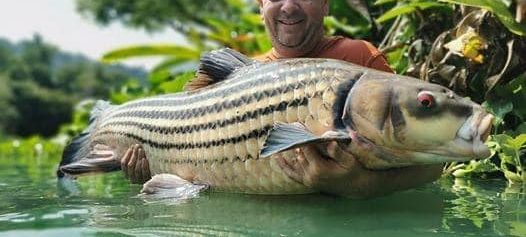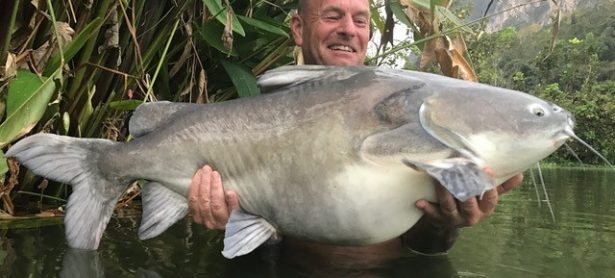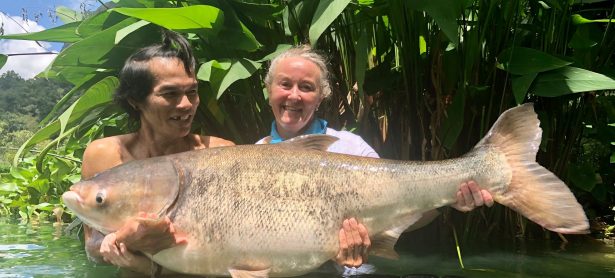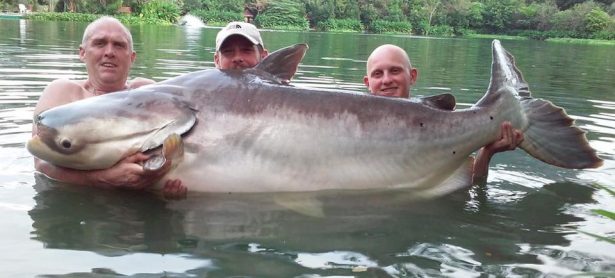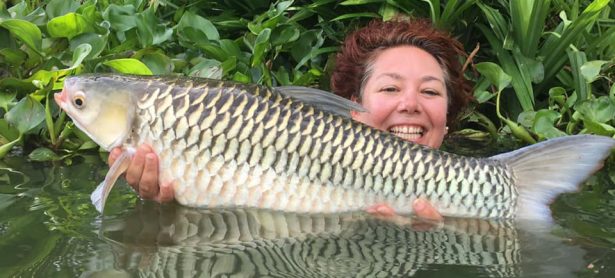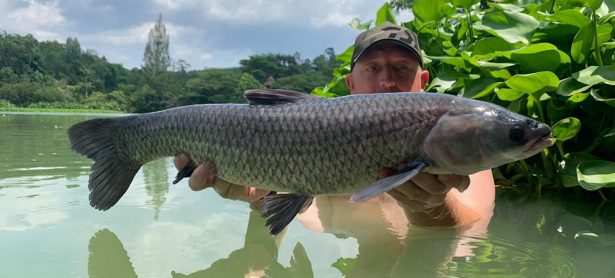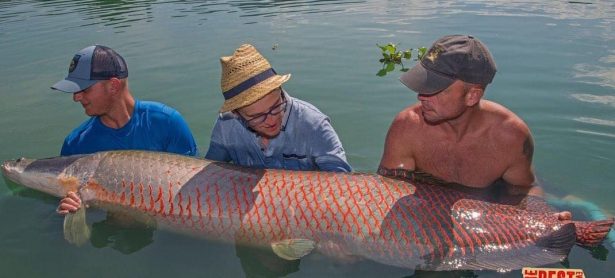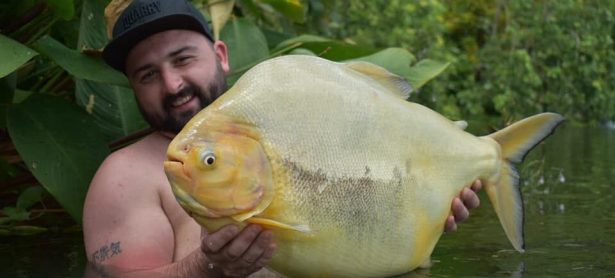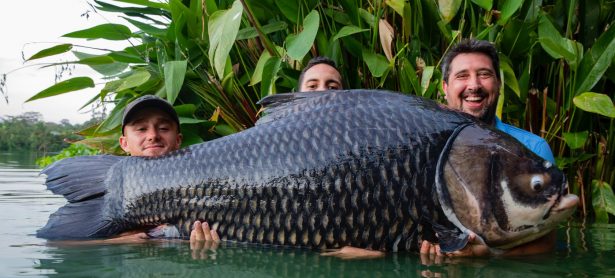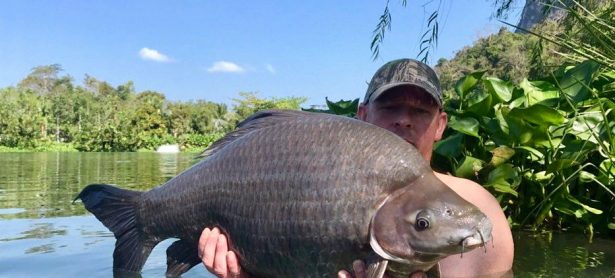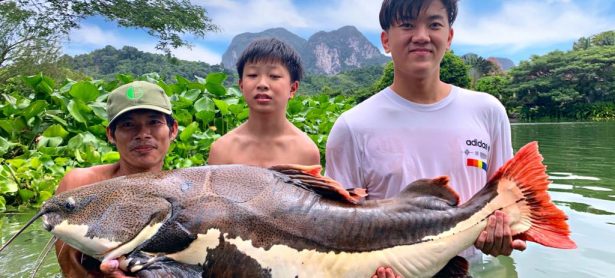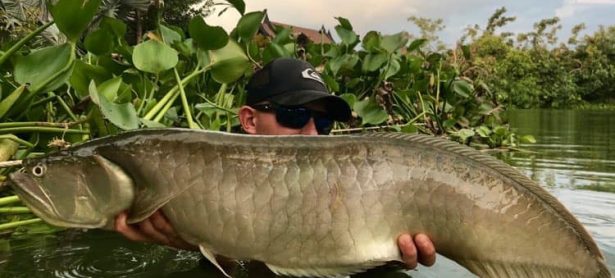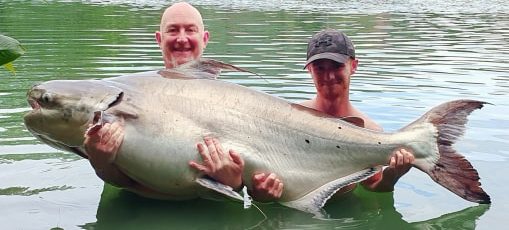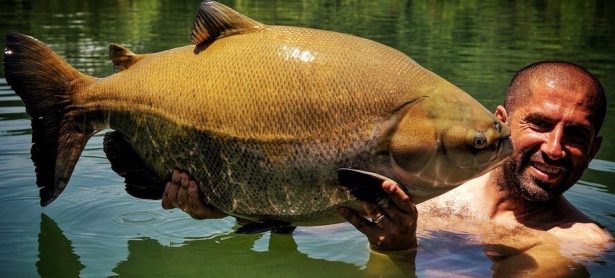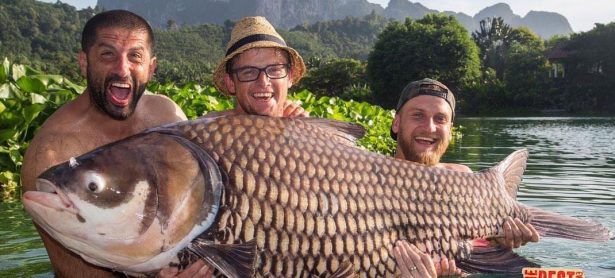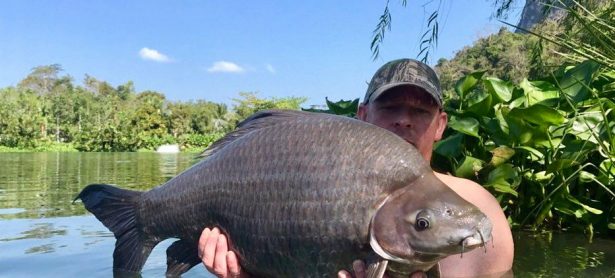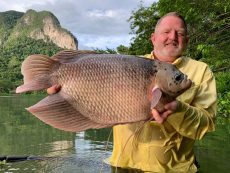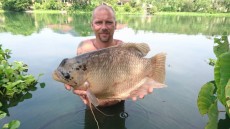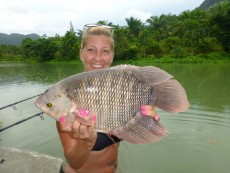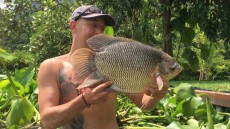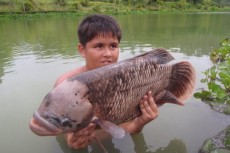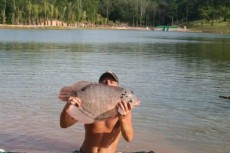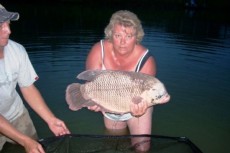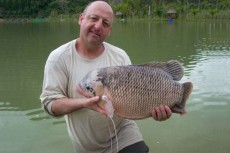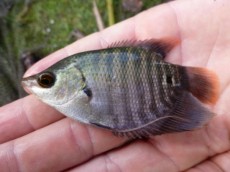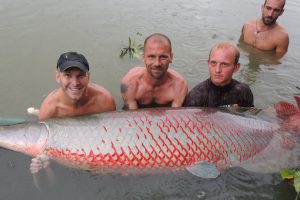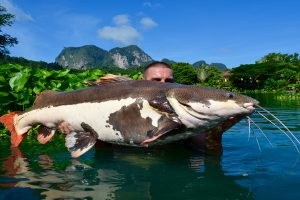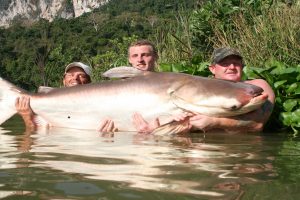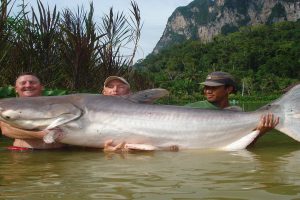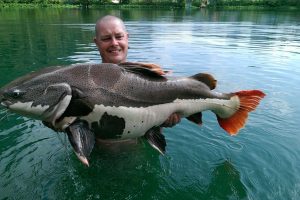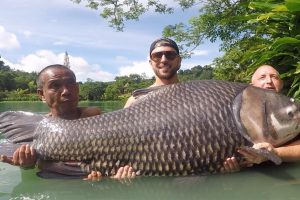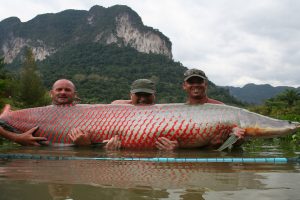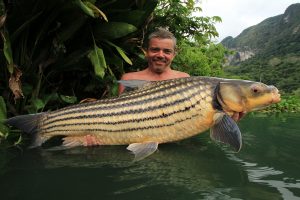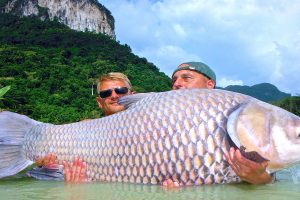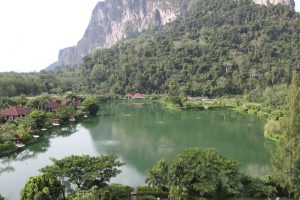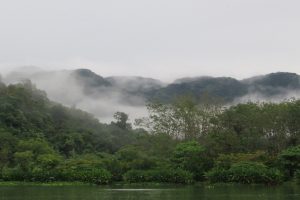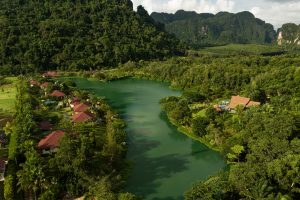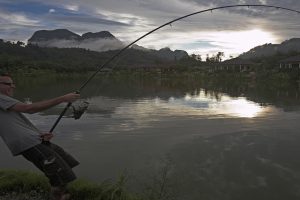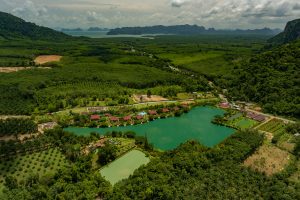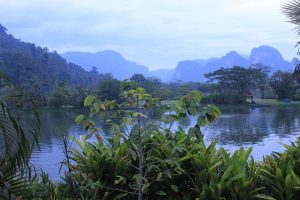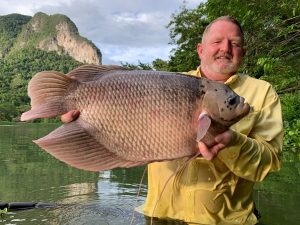 Name: Giant gourami (let).
Name: Giant gourami (let).
Species: Osphronemus goramy.
Thai name: Pla let.
Max length: 1m.
Max weight: 14kg (30lb).
IGFA record: 19lbs.15ozs-9.05kgs.
Diet: Fruit, water plants, nuts, fruit, vegetables, insects, shrimp, maize and bread.
To fish for our giant gourami we suggest you fish dog biscuits with a controller on the surface. Bait up with floating pellets and fish the biscuit amongst your free offerings. Fish the same as you would floater fishing at home for carp. Using this method you will also take Siamese carp and pacu. Alternatively fish bread flake in the margins alongside the water hyacinth beds. Our gourami also take floating crust and small pop-ups in the margins, or try float fishing maize alongside the weedbeds for sport with these fish and pacu. Gourami will also readily take dry flies, in particular hopper patterns so they are well worth targeting with a fly rod.
The gourami are very fragile when they are big (over 10lbs), so please have your camera at the ready, take one quick picture and put the fish back in the water. These fish are the most fragile species we have, as our high pH levels here in the south do not really suit the gourami who prefer low pH. Although when not fished for they are hardy fish which will stand low oxygen levels, support them in the water, moving them gently back and forth until they are strong enough to swim off. Please take our guide’s advice at all times with these beautiful specimens, and if they think the fish will not stand a photo they will instruct you to release the fish immediately. As with all our fish we will not sacrifice them for pictures or records. Our fish’s welfare takes priority at all times.
General facts on the giant gourami:
The giant gourami is native to Thailand, Malaysia, Vietnam and Indonesia. Gourami are pale to golden yellow with pale blue stripes, or alternatively they are a dull pink with grey stripes as ours are. The males have more pointed dorsal and anal fins than the female, and mature males have a distinct lump on their foreheads called the nuchal hump. Females have thicker lips than males. Gourami can breathe air when oxygen levels are low by using their labyrinth organ, which acts like a lung. They can live in brackish water, swamps, lakes and rivers.
They can live for long periods out of water by breathing moist air, however they do not tolerate high pH levels. The males are aggressive to each other, engaging in violent fights just like their cousins the Siamese fighting fish. Breeding gourami build a nest made of plants and twigs on the surface suspended with bubbles, and they actually guide their eggs into this nest where two weeks later they hatch out and leave the nest. Prior to spawning the males change to light black in colour. Gourami are said to be vegetarian; they like water plants, fruit, including citrus fruits, tomatoes and even onions. However they will readily eat crustaceans, molluscs and insects. The gourami is another fish farmed as a food source in Thailand where they are called let. They are deep fried in garlic and pepper or deep fried and served with a sweet chili sauce. The gourami is even used in drainage canals to control weed growth as they are voracious vegetarians.



